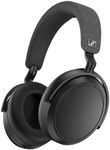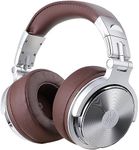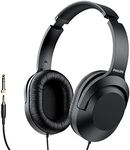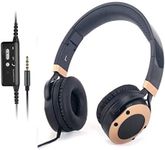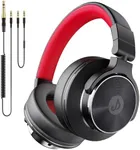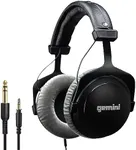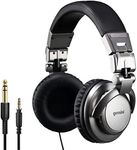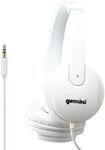Buying Guide for the Best Headphones For Flying
When choosing headphones for flying, it's important to consider several key specifications to ensure you get the best experience during your travels. The right pair of headphones can make a significant difference in comfort, sound quality, and overall enjoyment of your flight. Here are the key specs to look out for and how to choose the best fit for your needs.Noise CancellationNoise cancellation is a feature that reduces unwanted ambient sounds using active noise control. This is particularly important for flying because it helps to block out the constant hum of the airplane engines and other background noises, allowing you to enjoy your music or movies without distraction. Noise cancellation can be divided into active and passive. Active noise cancellation (ANC) uses microphones and speakers to pick up and cancel out external sounds, while passive noise cancellation relies on the physical design of the headphones to block noise. If you are a frequent flyer or sensitive to noise, ANC headphones are a great choice. For occasional travelers, passive noise-canceling headphones might suffice.
Comfort and FitComfort and fit are crucial when selecting headphones for flying, as you will likely be wearing them for extended periods. Look for headphones with cushioned ear pads and an adjustable headband to ensure a snug yet comfortable fit. Over-ear headphones tend to be more comfortable for long-term wear compared to on-ear or in-ear models. If you prefer in-ear headphones, make sure they come with different sizes of ear tips to find the best fit for your ears. Consider your personal comfort preferences and how long you typically wear headphones during flights to make the best choice.
Battery LifeBattery life is an important consideration, especially for long flights. Wireless headphones rely on battery power, and you don't want them to die in the middle of your journey. Look for headphones with a battery life of at least 20 hours to ensure they last through even the longest flights. Some headphones also offer quick charging features, which can provide several hours of use from just a short charge. If you often take long-haul flights, prioritize headphones with longer battery life and quick charging capabilities.
Sound QualitySound quality is a key factor in enjoying your music, movies, or podcasts while flying. Look for headphones with a balanced sound profile that offers clear highs, mids, and deep bass. Some headphones come with customizable sound settings or equalizers, allowing you to adjust the sound to your preference. If you are an audiophile or simply enjoy high-quality audio, prioritize headphones with superior sound quality. For casual listeners, a good balance of sound quality and other features like noise cancellation and comfort may be more important.
PortabilityPortability is important for travelers, as you want headphones that are easy to carry and store. Look for headphones that are foldable or come with a carrying case to protect them during transit. In-ear headphones are generally more portable than over-ear models, but over-ear headphones often provide better noise cancellation and comfort. Consider how much space you have in your carry-on luggage and how you plan to store your headphones when not in use. Choose a model that balances portability with the other features you need.
ConnectivityConnectivity options are important to consider, especially if you plan to use your headphones with multiple devices. Most modern headphones offer Bluetooth connectivity for wireless use, but it's also useful to have a wired option in case the battery runs out or if you want to connect to in-flight entertainment systems. Some headphones come with additional features like multipoint connectivity, which allows you to connect to two devices simultaneously. Think about how you plan to use your headphones and choose a model with the connectivity options that best suit your needs.

